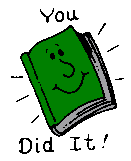Main
Menu
Introduction
Dance Analysis
Section 1
Section 2
Section 3
Section 4 Management
Suggestions
Assessment Strategy
Teacher Reflections
Resources
Dr Hopper Website
|
|
 Assessment Assessment 
Student Learning
This task progression gives students opportunities for learning in a number of domains.
Psychomotor: Through exploring and refining the various movements, students will develop psychomotor skills such as coordination and grace.
Cognitive: They will also achieve learning within the cognitive domain through the problem solving aspect of the dance. We want our students to make decisions about when and how they should move, both individually and as a class. They are given the responsibility of listening to the music and deciding how they can best apply the movements to reflect what they hear. They also need to decide “how can we as a class best represent leaves falling to the ground?” through asking them questions like “Do they all fall off the trees at once?” “How can we show that?” The dance is not about us teaching them a set of specific movements to be done in a specific pattern.
They also achieve learning in the cognitive domain by adding new words to their vocabulary. Some of them may not yet know words like drift and settle, and this dance will help them to grasp what they mean.
Affective: Students’ affective learning was also demonstrated in this task progression. The students worked as a group to represent the image of falling leaves. They were aware of what their peers were doing and how they should adjust their own movements to create a realistic scene. They also showed respect for one another by actively listening and participating.
Possible Assessment Strategies
1. Have students perform in small groups and assess them according to the following criteria. Videotape final performance to use for both teacher and self-assessment purposes.
"Falling Leaves ” Assessment Rubric
Level
Category |
Does Not Meet Expectations |
Minimally Meets Expectations |
Fully Meets Expectations |
Exceeds Expectations |
Movement |
Unable to perform any or most of the key movements (drift, turn, whirl, leap, settle). |
Able to do some of the basic movements: drift, turn, whirl, leap, settle |
Can do all of the basic movements with little error, and chooses appropriate movements to go with the music.
|
Is able to do all of the key movements without mistake, and with excellent timing to the music. |
Body and Space Awareness |
Running into other students; standing close to walls during participation |
Are moderately able to keep in own space, although will bump into others
|
Is able to function in own space most of the time, and is able to move throughout the larger space without incident. Good use of pathways and levels.
|
Fully aware of body and space, and is cautious of other children’s space in the class. Makes excellent use of pathways and levels.
|
Effort |
Does not hold still shape during introduction. Moves with stiffness. |
Holds intro. leaf shape fairly still but no tenseness in the muscles. Demonstrates fluid movements for some of the body and ending of the dance, but often moves stiffly. |
Holds intro. leaf shape firmly with muscles tense. Demonstrates fluid movements for most of the body and ending of the dance. |
Holds intro. leaf shape firmly with muscles tense. Consistently demonstrates fluid movements for entire body and ending of the dance. |
Relationships |
Performs movements with no regard for what the rest of the students are doing. |
Demonstrates an awareness of what movements other students are doing and responds appropriately in only one or two sections of the dance.
|
Demonstrates an awareness of what movements other students are doing and responds appropriately in three sections of the dance. |
Consistently demonstrates an awareness of what movements other students are doing and responds appropriately throughout the entire dance. |
Participation |
Does not participate in the lessons |
Participates in most of the lesson, but remains still during some of the movements |
Participates in the lessons with enthusiasm and does all of the movements |
Enthusiastic and energetic participation, with insightful and helpful input when asked |
    
2. Have students complete a self-assessment on what they have learned in the unit. Have students reflect on each of the above criteria (movement, body and space awareness, effort, relationships and participation). Ask them how they would change the dance to make it even better. You may wish to have students rate themselves on each of the criteria, write about what they learned, or discuss their learning orally.
Having students assess their own work gives them responsibility for their learning and requires them to think critically about what they have learned. (BC IRP).
|
 Assessment
Assessment 
